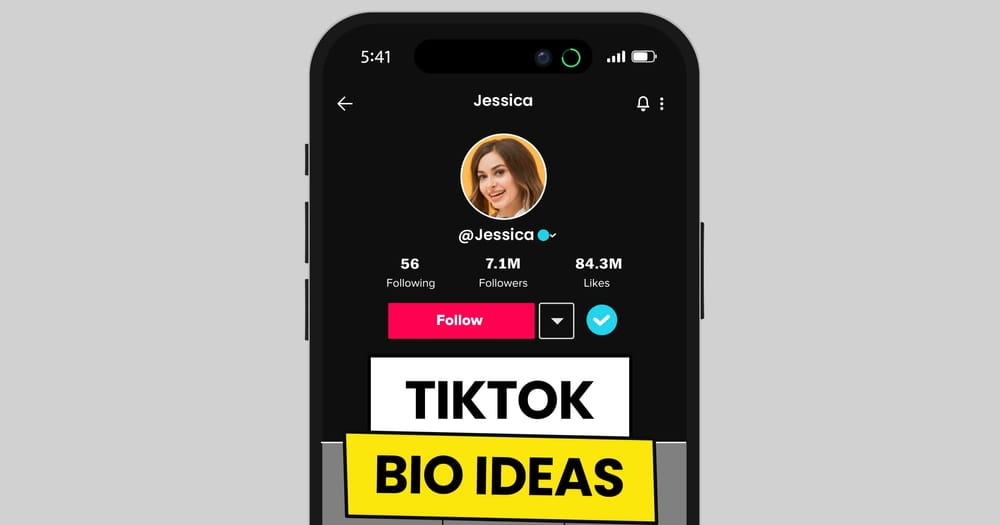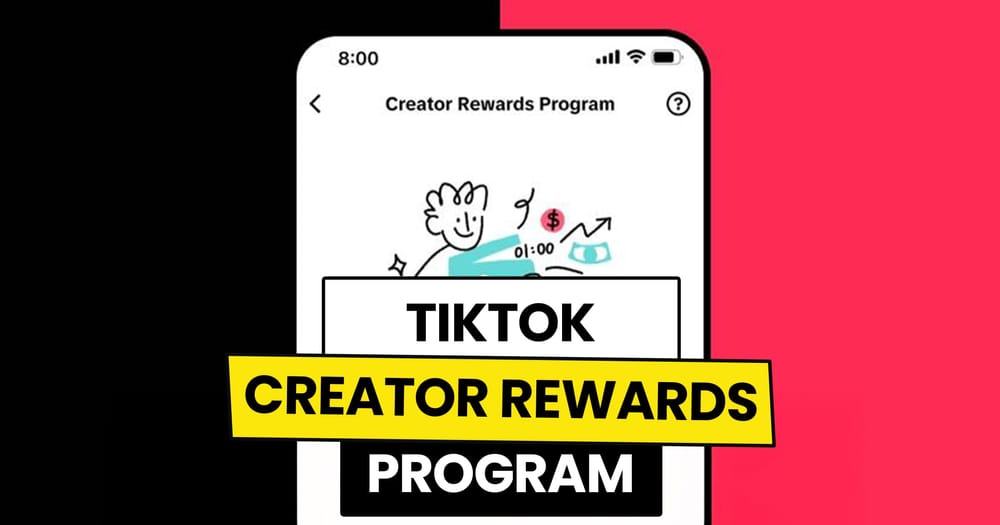It’s easy to think global on social. You post a TikTok, hope it lands on someone’s For You Page, and imagine thousands of new eyes finding your brand. But while viral reach gets all the hype, local reach is often where real business happens.
Whether you're running a coffee shop, launching an event, or trying to connect with a nearby audience, visibility in your own backyard can be the key to growth. And yet, many brands completely overlook one of the simplest tools to get there: geo-tagging.
It might feel like a small detail, a pin on a map, a location tag in your caption, but that tag can shift how your content shows up in feeds, search results, and discovery pages across major platforms. Especially in 2025, as algorithms get smarter and more localized, ignoring geo-tags means missing out on one of the most organic ways to connect with people right where they are.
In this post, we’re diving into why geo-tagging still matters, how it works across platforms, and how to use it strategically to drive discovery, engagement, and local impact. Because sometimes the most powerful way to grow online… is to start local.
1. Why Geo-Tagging Still Matters
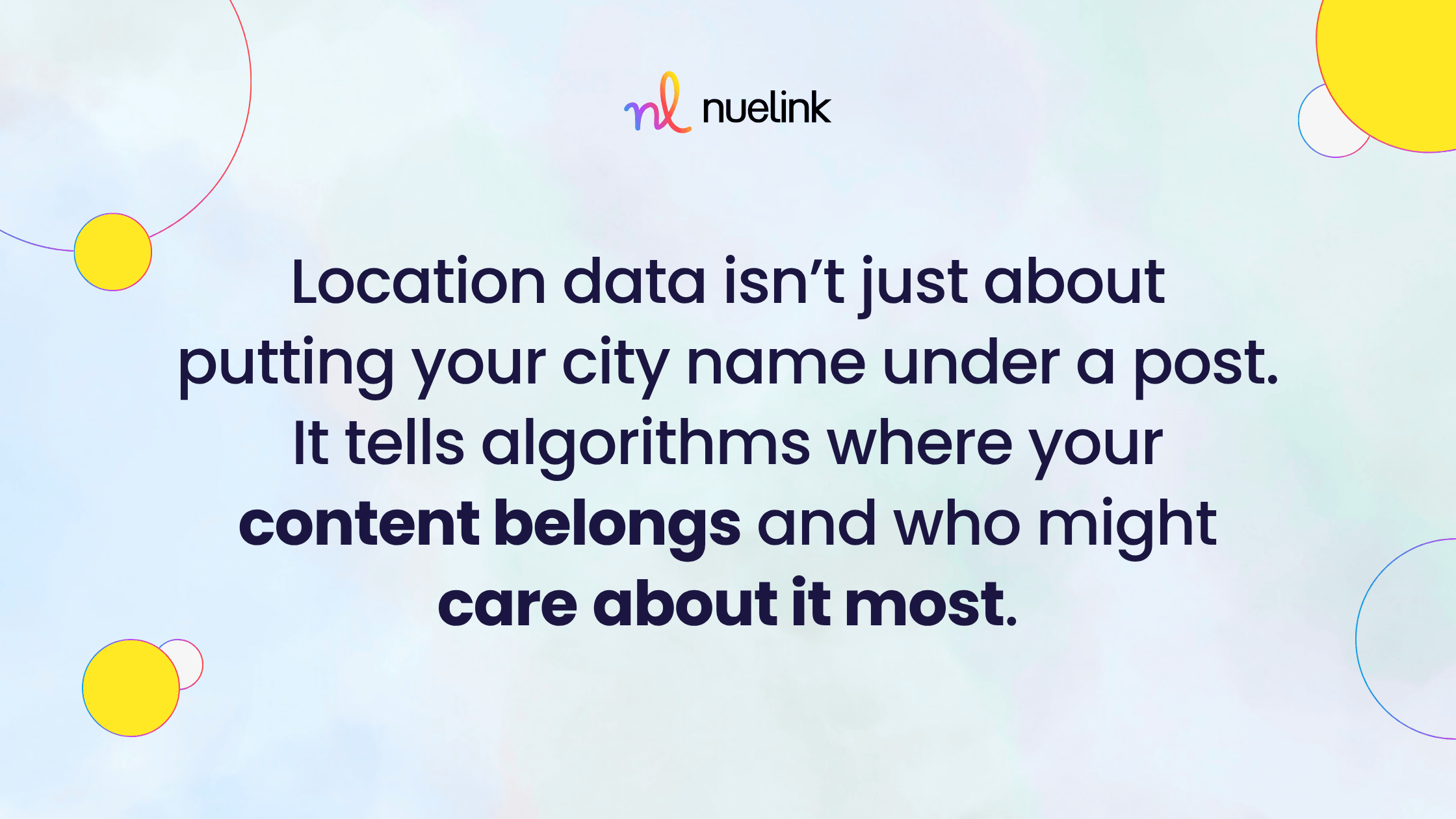
In a world obsessed with going viral, it’s easy to overlook what’s happening just down the street. But in 2025, platforms are doubling down on local relevance, and that makes geo-tagging more valuable than ever.
Location data isn’t just about putting your city name under a post. It tells algorithms where your content belongs and who might care about it most. When used intentionally, geo-tags help you surface in local Explore pages, trend with nearby users, and show up in search results when someone’s looking for what you offer, not globally, but right now and right here.
If you’re a small business, creator, or community-focused brand, geo-tags quietly do a lot of heavy lifting:
- They connect your content to local audiences who are most likely to take action.
- They increase the chance of being featured in localized discovery feeds.
- They signal relevance for real-world moments like events, launches, or neighborhood trends.
And the impact shows up in places that matter, foot traffic, DMs, Google searches, and actual conversations in your community. That’s why ignoring geo-tagging isn’t just a missed opportunity, it’s a disconnect from the people closest to your brand.
2. How Geo-Tags Work Across Major Platforms
Not all platforms treat geo-tags the same way. Some push locally tagged content to nearby users. Others prioritize location behind the scenes, influencing visibility without making it obvious. But across the board, geo-tagging influences where your content shows up and who sees it, especially when combined with trending formats like Stories, Reels, or short-form video.
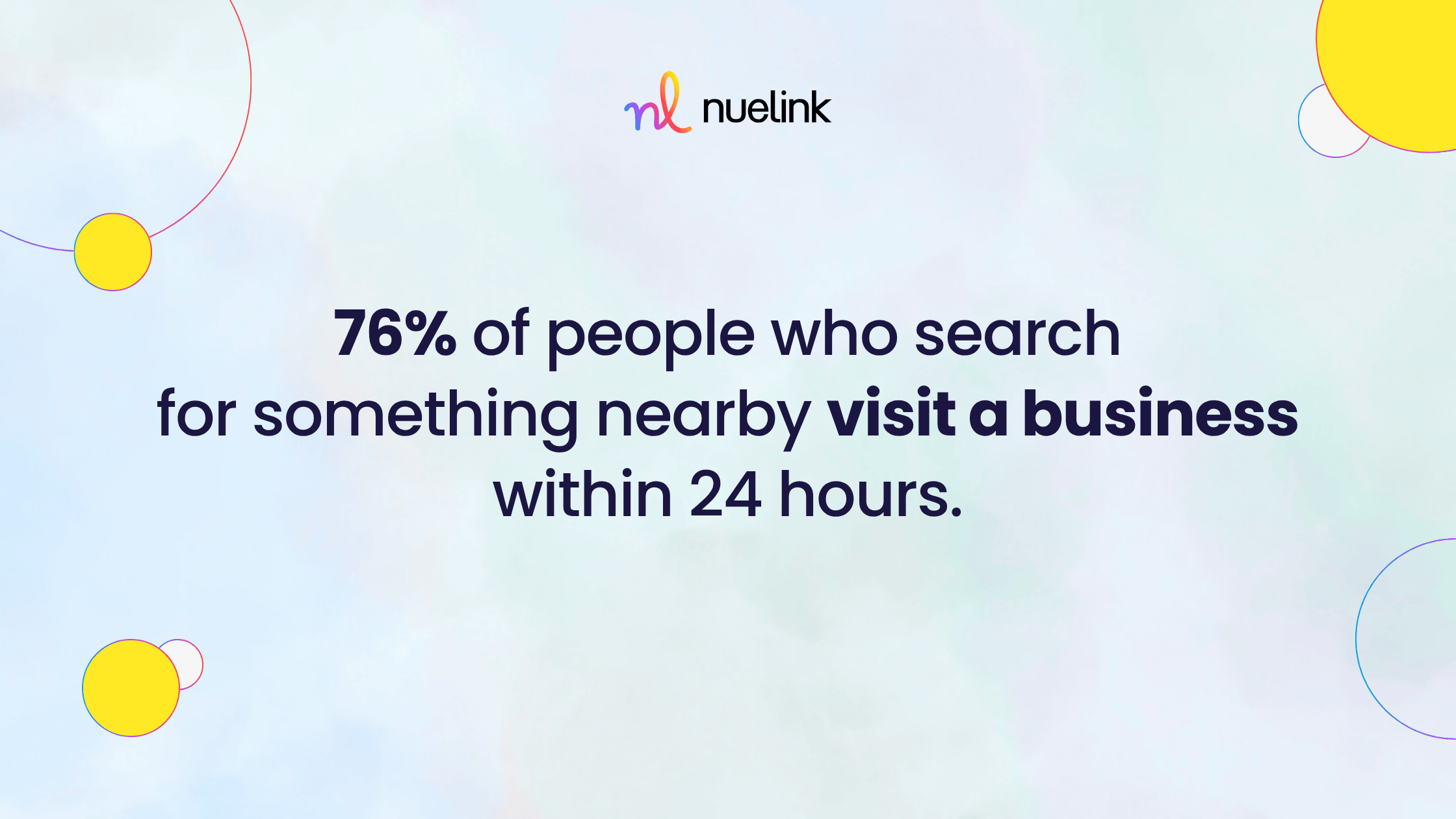
Here’s how geo-tagging plays out across major platforms:
Instagram remains one of the strongest platforms for geo-based discovery, especially through Stories and Reels.
- Stories and Reels with geo-tags can appear in local Explore or location-based stories.
- Geo-tags improve visibility in local search results, especially when users search by city, neighborhood, or venue.
- According to stats, 83% of users say they discover new products or services on the platform, while 60% of users report learning about a product or service via Instagram, and a significant number go on to take action, whether that's visiting a website, following an account, or purchasing.
While organic reach is lower, Facebook still drives results locally, especially for events, physical locations, and community groups.
- Check-ins from customers or attendees boost visibility and trust.
- Posts with geo-tags are more likely to be suggested to nearby users, especially in Facebook Events and Marketplace.
- Businesses with consistent location data in posts and their Page info often appear higher in local recommendations.
If you’re hosting something, tag it. If you’re promoting a location, check in. These small actions can lead to real-world traffic.
Threads
Threads now supports link previews and topic-based discovery, but geo-tagging isn’t a core feature (yet). That said:
- Location can still influence visibility indirectly when linked posts reference regional content or events.
- Pairing Threads posts with content from Instagram (like cross-posted Reels or Stories) can inherit some of that geo-targeting effect.
TikTok
TikTok is the wild west of discovery, but local trends matter more than you think.
- TikTok’s algorithm considers viewer location, especially for smaller accounts or newer posts.
- Posts with geo-tagged captions or hashtags tend to surface to users nearby, particularly when tied to trending events or local businesses.
- According to TikTok’s own data, 58% of users rely on the app for discovering new places and products near them.
Google Business Profile (GBP)
Arguably the most underrated geo-tagging tool. Your Google Business Profile isn’t social-first, but it’s essential for visibility.
- Posts, photos, and updates on GBP all pull from your location data and impact Google Maps and Search rankings.
- Adding local photos and tagged posts improves your chances of appearing in Google’s Local Pack, the top 3 business results shown for nearby searches.
- 76% of people who search for something nearby visit a business within 24 hours. That’s a conversion path geo-tags directly influence.
If you're not regularly posting and tagging updates in GBP, you're missing where local search meets action. Here is a quick guide to help you get started.
X (formerly Twitter)
Geo-tagging on X is subtle but still functional.
- Tweets with location tags appear in local trend monitoring tools and can surface in “Nearby” or event-based feeds during live moments.
- If your content is tied to news, local updates, or community events, location still adds value here.
Geo-tagging isn’t about doing everything everywhere. It’s about knowing where your audience hangs out, and how each platform treats location as a signal for relevance, reach, and connection.
3. Strategic Uses of Geo-Tags for Different Goals
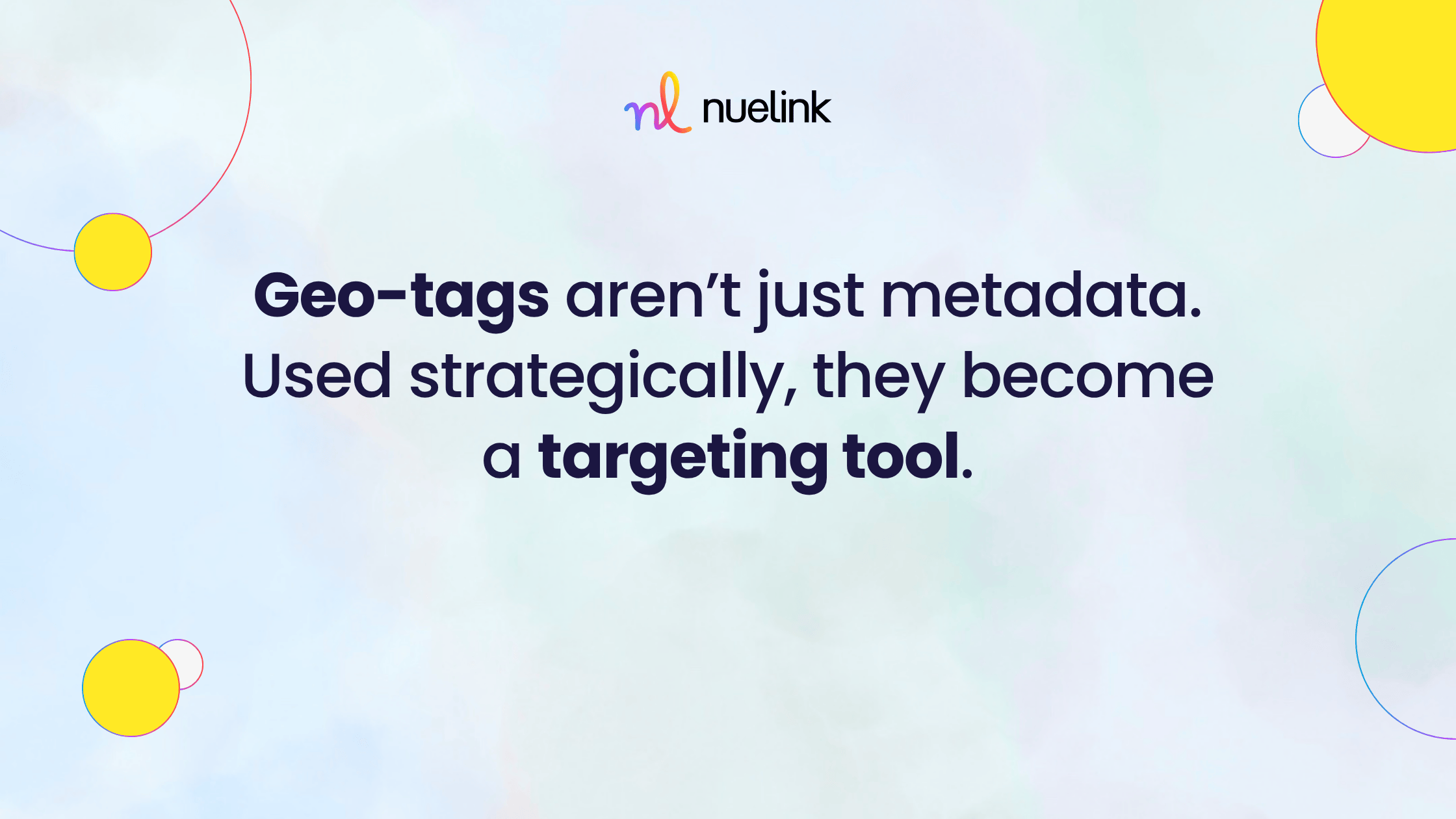
Geo-tags aren’t just metadata. Used strategically, they become a targeting tool. Whether you’re trying to fill seats at an event, drive in-store traffic, or rank in search, geo-tagging helps social media content do more than look good, it helps it perform.
Here’s how to think about location tags based on what you’re trying to achieve:
1. Boosting Local Reach for Service-Based or Physical Businesses
If your business has a storefront, geo-tagging is a must.
- Tag your city or neighborhood consistently in Reels, posts, and Stories.
- Include local landmarks or recognizable locations in the content itself to catch attention and build relevance.
- Pair your geo-tags with “near me” language in captions to align with how people search.
Nuelink users: Use Collections to pre-schedule location-tagged content for each city or service zone you cover.
2. Increasing Foot Traffic During Events or Launches
Planning a pop-up, soft launch, or local event? Geo-tagging works like a digital flyer, but smarter.
- Use geo-tags in Stories leading up to the event, especially when paired with countdown stickers or polls to boost local visibility.
- Encourage attendees to check in and tag your location during the event. UGC (user-generated content) with your geo-tag can multiply your reach.
- Tag nearby venues or high-traffic areas if relevant.
3. Ranking in Local Search on Google and Social
For brands that rely on being found via search, from wedding vendors to dental clinics, geo-tagging supports discoverability across both social and search.
- Post regularly to your Google Business Profile, and geo-tag photos and updates.
- On Instagram and TikTok, include searchable city names or neighborhoods in your captions and alt text.
- On Pinterest, use local keywords in board names and Pin titles, especially for event planning, real estate, or tourism content.
4. Partnering with Creators in Specific Regions
Running a campaign in a particular city or targeting a regional market? Partnering with local creators amplifies your geo-tagging efforts.
- Make sure the content they create includes geo-tags relevant to the area, especially in Reels and TikToks.
- Ask them to reference the city or neighborhood in their script or caption to boost algorithmic context.
- This strategy builds local trust and visibility, especially for food, retail, hospitality, and wellness brands.
4. Tips and Best Practices
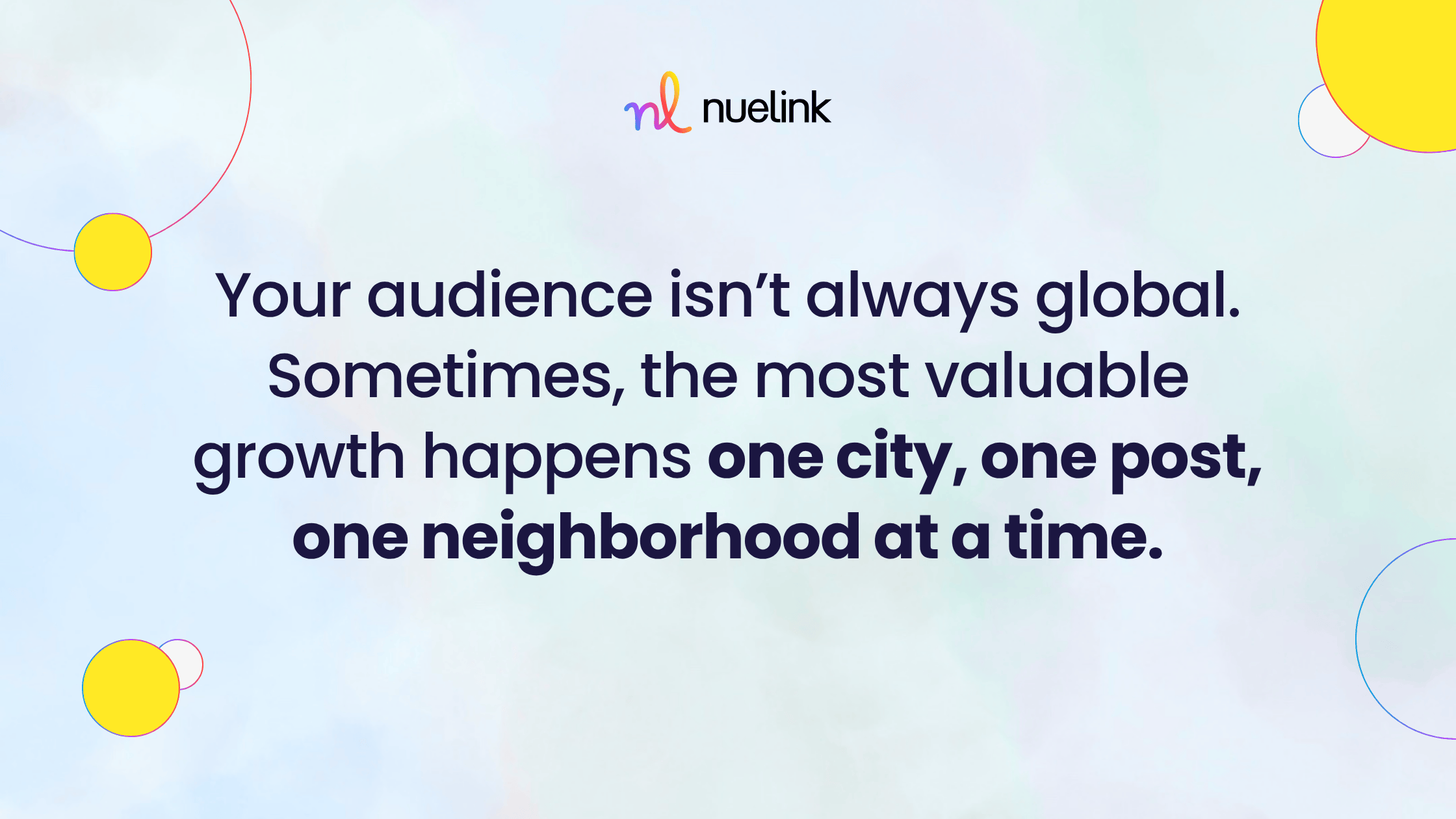
Adding a location tag might only take a second, but how you use it determines whether it adds value or gets ignored by the algorithm (or worse, confuses it). The key is to be specific, consistent, and aligned with what your content is actually about.
Here’s how to make geo-tagging work smarter for your strategy, not just look good on your post.
Geo-Tagging Do’s and Don’ts
DO:
- Tag specific neighborhoods or landmarks, not just broad cities.
- Use geo-tags that match the visual or contextual content of your post.
- Combine geo-tags with relevant local hashtags.
- Test and rotate between locations if you serve multiple areas.
DON’T:
- Don’t tag unrelated or trending locations just for reach. It dilutes your relevance and hurts engagement in the long run.
- Don’t rely solely on geo-tags without backing them up with localized captions, hashtags, and context.
Combine Geo-Tags with Trends and Format Strategy
- On TikTok and Reels, combine location tags with trending audio that’s gaining traction in your region. The algorithm favors relevance, and that includes local behavior.
- On Instagram Stories, use the location sticker to show up in local location-based story groups (especially for brick-and-mortar businesses).
Geo-tagging isn’t just a checkbox. It’s a signal, to algorithms, to people, and to platforms, that your content belongs somewhere. And in an era where local discovery is more personalized and more powerful than ever, that signal can lead to clicks, calls, visits, and real connection.
Your audience isn’t always global. Sometimes, the most valuable growth happens one city, one post, one neighborhood at a time.





